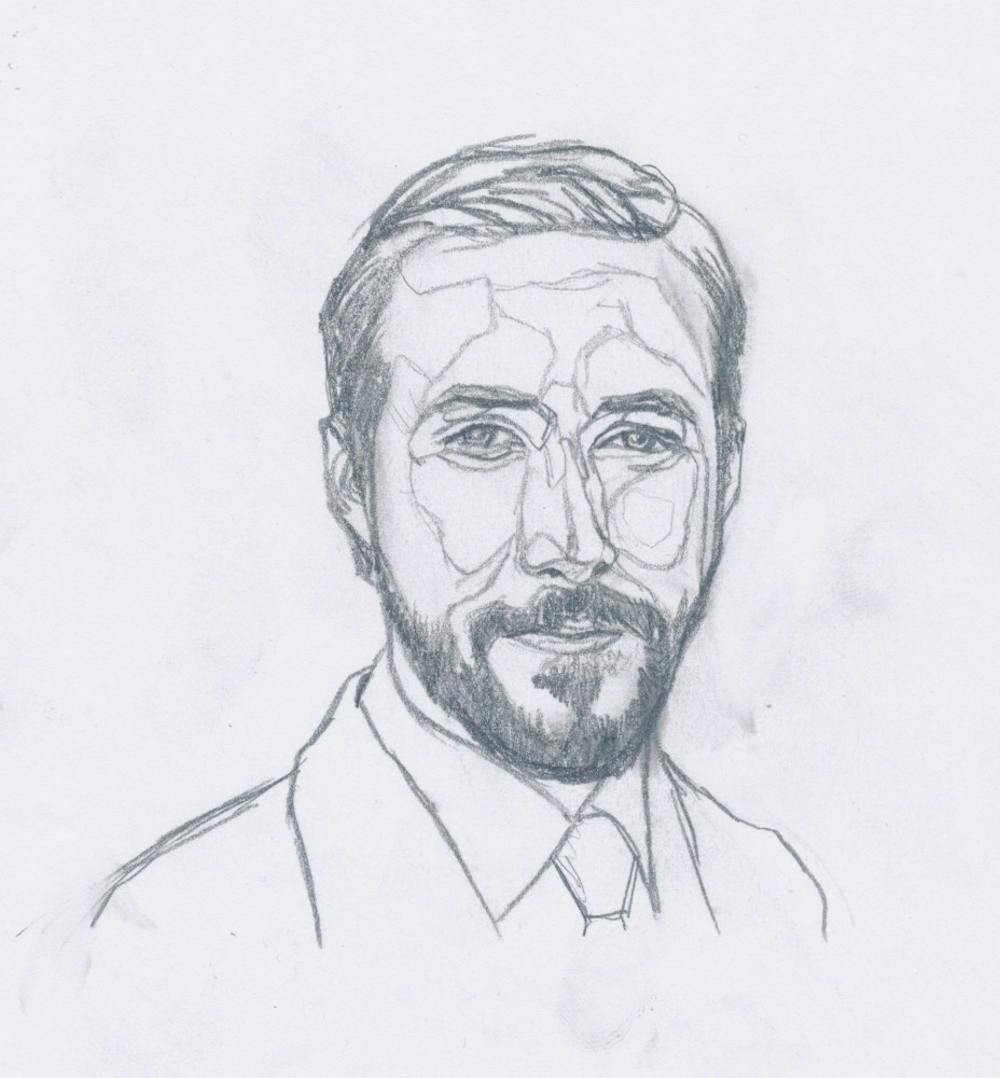Watching First Man cemented my image of Ryan Gosling as perhaps the most versatile actor in his industry today. It made me realize that there is nothing he cannot do. Gosling morphs into roles as easily as he can look the part.
Gosling’s career didn’t begin with The Notebook (he has the Mickey Mouse Club to thank for that), but its huge popularity first catapulted him into stardom. Gosling’s portrayal of Noah Calhoun, a mill worker desperately in love with the wealthy Allie Hamilton, caused millions to swoon at the dreamily handsome and steadfastly enamored Noah. It would have been easy for Gosling to sign on for the guaranteed roles of an archetypal lover. However, Gosling refused to be trapped into a typecast role—he reportedly turned down offers to be People's “Sexiest Man Alive” multiple times.

Gosling quickly moved on to the role of Dan Dunne in Half Nelson. He encapsulates the two sides of a coin. During the day, Dan is a charming teacher at an inner–city public middle school who banters with the students and winks at their progress. Gosling easily evokes this charm with his flow of motion and speech. He brings the passion of the character to life with his constant movements, whether it be coaching the girl’s basketball team and cheering them on while jumping up and down, or excitedly waving at a student who has the right answer. At night, the character transforms.
This, too, Gosling perfectly conveys. He uses his body again to slump into exhaustion. He stares off into the distance, and his eyes hold terrible depths of sadness that make him utterly believable when he snorts cocaine off of his table. The character’s interactions with his student, Drey, elicit hope from the audience as they see the possibility for redemption with this young friend, but it is Gosling who evokes the pain that Dan is still feeling. He squints his eyes like it hurts to look at the world and constantly rubs his face, exemplifying the nervous tics of an addict. The possibility of a symbiotic relationship between Dan and Drey is almost irrevocably destroyed when Drey deals her uncle’s drugs to a dreamily high Dan. Gosling’s perfect representation of a drug addict who is almost beyond hope is what makes this moment so heartbreaking.
His efforts in this dramatically different role were rewarded with his first Oscar nomination.

Gosling continued to break his mold with roles in Lars and the Real Girl and The Place Beyond the Pines. In Lars and the Real Girl, he clearly didn’t mind sacrificing his good looks to resemble a creep who has entered into a relationship with a life–size sex doll. It’s jarring. Gone is Gosling’s signature charisma. In its place is the socially stunted Lars, who sports a handlebar mustache, a tight–lipped and awkward smile, and an unsteady gait. In The Place Beyond the Pines, Gosling becomes a poor motorcycle stuntman adorned with face tattoos and Eminem–style platinum blond hair. The cinematography centers on close–ups that reveal the varying emotions characters are expressing—or more tellingly, concealing. Throughout most of his role in the film, Gosling maintains a stony face that betrays nothing. It speaks to his character’s roughness and cynicism.
This only reinforces the key moments in which the character betrays some kind of emotion. When he hears his friend’s history of robbing banks, Gosling smirks in disbelief. As he starts to realize that his friend has indeed been successful in these pursuits, his expression becomes tentative, his eyebrows scrunching and his eyes widening. It makes you feel hopeful with him, hopeful that he can pull off a bank robbery to support his family. When he robs the bank with a helmet covering his face, you can still feel his terror. His voice constantly cracks as he screams for everyone to get down, and the way he agitatedly brandishes his gun made my heart stop.
Gosling has the skills to make you completely believe the motivations of these complex characters. It’s the way he moves his body, the way he arranges his features, the way he physically and emotionally transforms into these characters.

But he didn’t stop with more serious roles as an oddball or an antihero. He extended himself into comedy, with a hilarious performance in The Nice Guys as Holland March, an incompetent private eye who has his preteen daughter drive him around. His shrill voice is perhaps the best part of the film, spiking into a near shriek whenever he freaks out—which is often. His drunken pursuit of an informant through a bar and a water tank, which ultimately is brought to an end with March stumbling off a balcony with a goofy smile, shows that Gosling can do it all.
Don’t get me wrong, if Gosling had continued with roles as a love interest or some kind of hunk—as someone like John Krasinski confusingly seems to be doing with Jack Ryan—he would have carried these parts out brilliantly and given Cary Grant a run for his money. But while Grant seemed largely content with these repetitive parts, Gosling sought out something more challenging, and has left a significant mark in film for it.
Gosling is fascinating to watch, and it is well worth tracking his movies that can move you to tears of despair just as easily as they can to tears of laughter.







